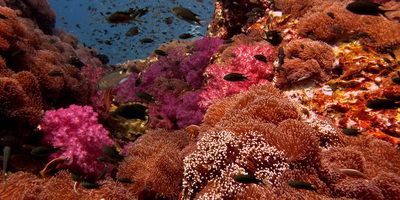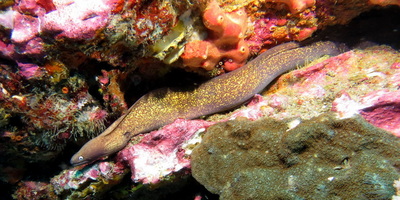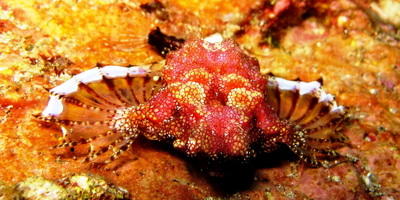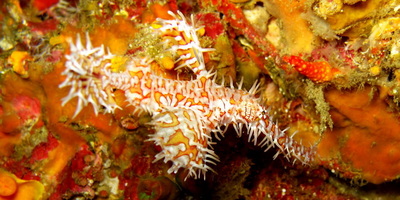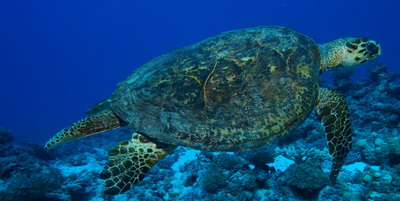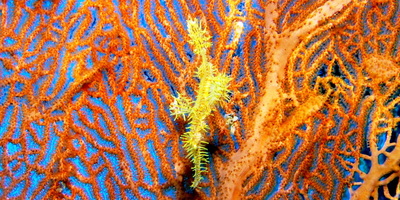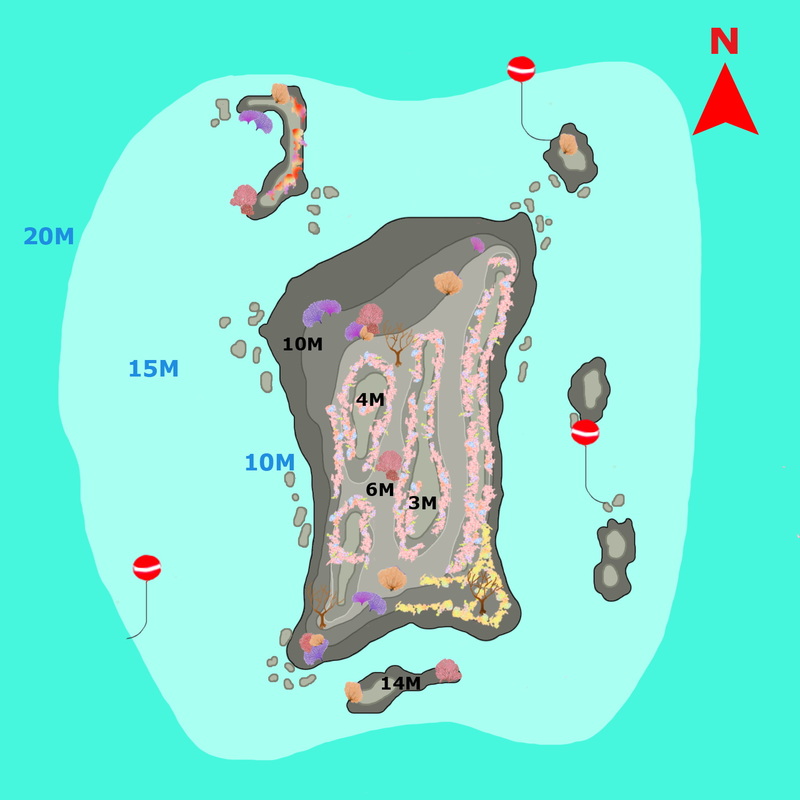Phuket Dive Guide : Hin Chabang
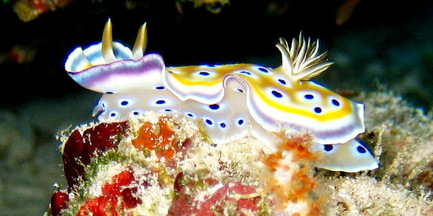
About the location and site
Hin Chabang (Jabang) looks like an underwater pyramid. It is made up of granite stone shapes similar to building blocks rising up from the seabed into a structure with series of monolithic stones at its peak. One of the best features of this site is probably the amount and conditions of the soft corals. The density of coral growth here is amazing, the dream of any photographer. With depths of 18 meters, the sandy soil and soft whip-corals are the hosts of seahorses, nudibranchs and many other small creatures. Closely observe the sea life here while swimming your way up. At least 6 types of eel including snake eels, different types of lionfish and stonefish can be found. Squid and Cuttlefish try to hide here and succeed in attracting the larger predators such as sailfish. Also worth to pay attention to the symbiotic relationships between the cleaner shrimp and the moray eel or the barrel sponge and its parasitic worms as they each live out their daily lives together. At the top around 8 metres, where the walls are completely covered in a thick carpet of purple and pink soft corals, you will find all the usual suspects, such as large and colorful scorpion fish and sometimes turtles. The dive usually ends there in the coral gardens where you can see the peaks going to 3 meters below the surface. The visibility can go between 5 meters and 25 meters. Chabang Hin is known as a cleaning station for pelagic species that pass there in deep waters.
Hin Chabang (Jabang) looks like an underwater pyramid. It is made up of granite stone shapes similar to building blocks rising up from the seabed into a structure with series of monolithic stones at its peak. One of the best features of this site is probably the amount and conditions of the soft corals. The density of coral growth here is amazing, the dream of any photographer. With depths of 18 meters, the sandy soil and soft whip-corals are the hosts of seahorses, nudibranchs and many other small creatures. Closely observe the sea life here while swimming your way up. At least 6 types of eel including snake eels, different types of lionfish and stonefish can be found. Squid and Cuttlefish try to hide here and succeed in attracting the larger predators such as sailfish. Also worth to pay attention to the symbiotic relationships between the cleaner shrimp and the moray eel or the barrel sponge and its parasitic worms as they each live out their daily lives together. At the top around 8 metres, where the walls are completely covered in a thick carpet of purple and pink soft corals, you will find all the usual suspects, such as large and colorful scorpion fish and sometimes turtles. The dive usually ends there in the coral gardens where you can see the peaks going to 3 meters below the surface. The visibility can go between 5 meters and 25 meters. Chabang Hin is known as a cleaning station for pelagic species that pass there in deep waters.
The many boulders at Stone Henge at the top of the reef that gave this site its name are a very impressive sight. Often a leopard shark can be seen circling around them. Despite currents, there is always a place to hide from it and take time to look for small things such as the little crabs and gobies on the whip corals and the ornate ghost pipefish. Much of the reef consists of purple, white, and pink soft corals and there are many bright blue tunicates. Together with the magnificent, it makes colourful scenery.
